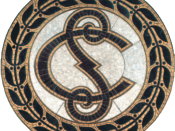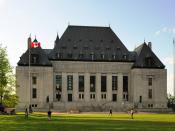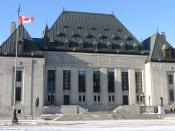EXECUTIVE BRANCH
Method of Electing and Term of Office
The Leader of Canada is called a Prime Minster, who is the leader of the party in power. The PM becomes the PM by having the most seats in Parliament, in other words, the party who has the most elected members becomes the party in power.
Usually, the term of government for the Canadian system is 3-5 years. When there is a minority government, the term is shorter because of the possibility of a vote of non confidence. But usually the PM calls elections, if he or she doesn't, the governor general has the right to remind and force the PM to call an election.
Positive:
÷ The people choose the government
÷ The PM is responsible to the people because he can be replaced
÷ A bad minority government can be voted out with a vote of non confidence.
Negative:
÷ A Majority government can't be voted out with a vote of non confidence until the term of the government ends
÷ The electorate may not be educated enough to make a logical choice
÷ There is no fixed election date, so the PM can be bad at first but then suck up to the people to remain PM.
Relationship of Leader to the Legislative Body
The PM is usually the person who presents bills to the legislative body. But technically everybody in Parliament may present bills. The Executive body draws up bills and the legislative body passes them. They are accountable because bills drawn up in the executive body must be sound and respect the Charter of rights and freedoms. If this is violated the Legislative party may call a vote of non confidence.
Positive:
÷ The legislative body protects the people's rights and freedoms from bills drawn up...


